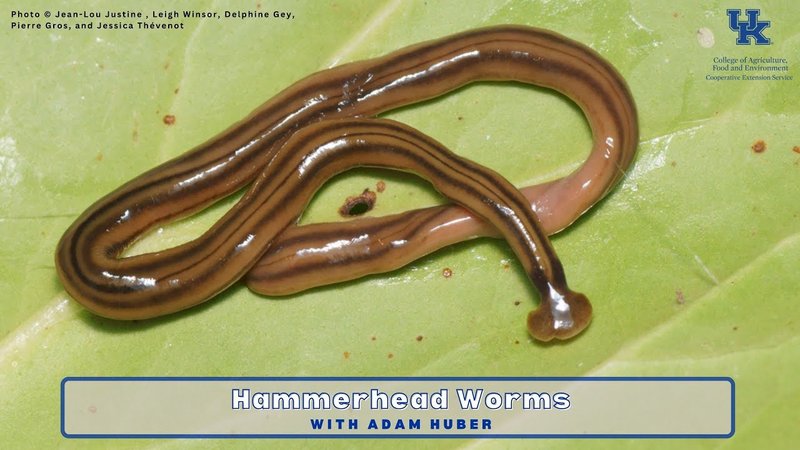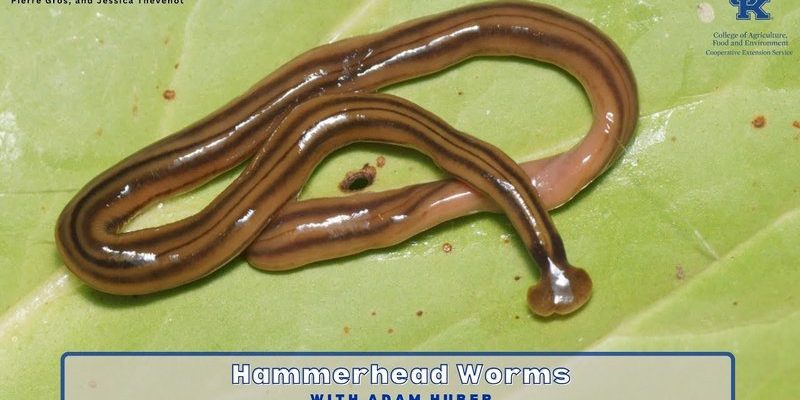
When it comes to hammerhead worm reproduction, the process is surprisingly unique. Much like a scene in a nature documentary, it’s a mix of drama, survival, and adaptation. So, if you want to keep your garden thriving while evading the hammerhead worm invasion, let’s dive into this topic with clarity and curiosity. Ready? Let’s get started!
What Are Hammerhead Worms?
Before we can tackle reproduction, it’s helpful to understand what hammerhead worms are. These worms, scientifically known as *Bipalium*, are members of a group called flatworms. Unlike common earthworms, hammerhead worms sport a distinctive flat, wide head resembling a hammer—hence their name. They’re typically found in tropical and subtropical regions but can pop up in various places, including gardens across the United States.
Hammerhead worms can vary in color but are often brown or gray, adorned with stripes. While they might look a bit creepy, their real significance comes from their role in the ecosystem. They feed on other smaller soil-dwelling creatures, such as earthworms, which can impact soil health. If you’ve ever wondered about the balance in your garden, understanding who your garden residents are is essential.
How Do Hammerhead Worms Reproduce?
Now, let’s get to the heart of the matter: reproduction. Hammerhead worms are hermaphroditic, meaning each worm has both male and female reproductive organs. This is kind of like having a “two-for-one” deal in nature! When two hammerhead worms mate, they exchange sperm and then go their separate ways to fertilize their eggs.
During mating, the worms can become intertwined, and this process can be quite the spectacle. You might even see them wriggling around each other for several hours. Once fertilization occurs, the female will lay her eggs. Here’s where it gets interesting—the eggs are typically secreted in a protective, jelly-like substance. This helps safeguard the developing embryos from potential threats in the soil environment.
The Lifecycle of Hammerhead Worms
After laying their eggs, hammerhead worms embark on their next chapter: the lifecycle. The eggs usually take about two to three weeks to hatch, depending on environmental conditions like humidity and temperature. Once hatched, the tiny worms are independent right from the start. They’re miniature versions of their adult counterparts and begin the hunt for food immediately.
In a way, their lifecycle is a classic “survival of the fittest” story. As they grow, they start consuming small invertebrates in the soil, helping them gain the strength needed for adulthood. It’s fascinating, really! But as a gardener, you’ll want to keep an eye on how many of these worms are around, especially considering their appetite for other worms, like our beloved earthworms.
Impact of Hammerhead Worms on Gardens
You might be wondering why knowing about hammerhead worm reproduction matters for your garden. Well, it’s all about balance. While they play a role in the ecosystem, too many hammerhead worms can lead to a decrease in earthworm populations. Earthworms are vital for soil health, as they help aerate the soil and break down organic matter.
If you find a few hammerhead worms hanging out in your garden, it’s not necessarily cause for alarm. But if you notice a surge in their numbers, it might be time to take action. Keeping an eye on their reproduction rates and overall population can help protect your garden’s delicate ecosystem.
How to Manage Hammerhead Worm Populations
If you’re concerned about hammerhead worms taking control of your garden, don’t fret. There are several strategies you can employ to manage their populations. Here are a few options:
- Manual Removal: If you see them, you can simply pick them out by hand or use a shovel. Just be sure to wear gloves!
- Natural Predators: Certain birds and other wildlife enjoy feasting on these worms. Encouraging natural predators in your garden can help balance populations.
- Moisture Control: Hammerhead worms thrive in damp environments. If your garden soil tends to be overly wet, try improving drainage.
- Soil Health: Keep your soil healthy with compost and organic matter, as this can boost earthworm populations that compete with hammerhead worms.
By combining these methods, you can maintain a healthy balance in your garden.
Final Thoughts on Hammerhead Worm Reproduction
Understanding hammerhead worm reproduction is essential for any gardener looking to maintain a healthy ecosystem. With their unique mating habits and lifecycle, these worms are more than just a garden oddity—they’re a reminder of the intricate relationships that exist in nature. By knowing what to look for and how to manage their populations, you can ensure your garden flourishes.
So, the next time you see a hammerhead worm slinking through your soil, you’ll be equipped with knowledge. You can appreciate this fascinating creature while keeping your garden in tip-top shape. Happy gardening!

